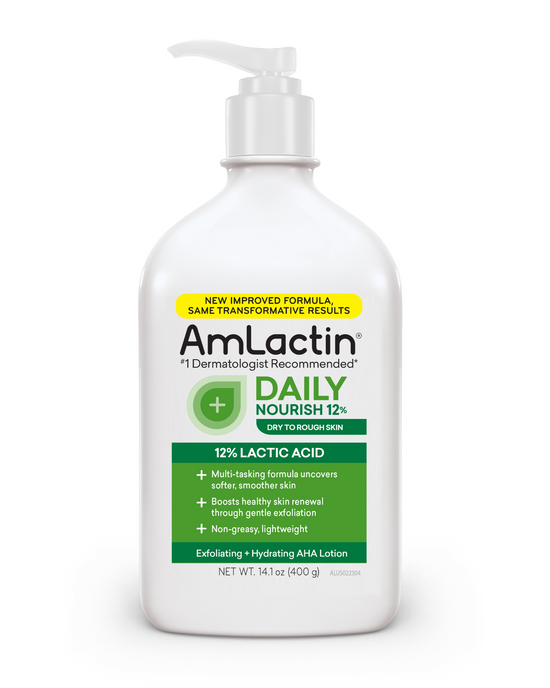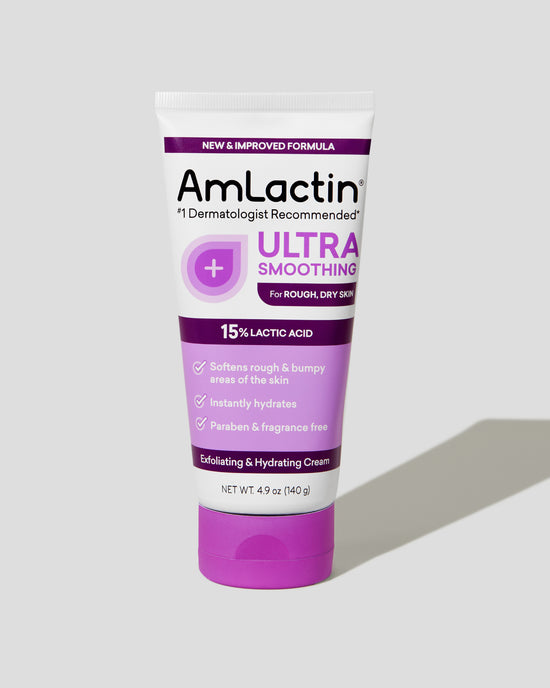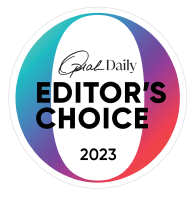Do you or your child have bumpy skin on the upper arms? Does skin appearance on the rear-end and thighs look like a plucked chicken and feel rough and dry like sandpaper? Do these symptoms become more noticeable in a dry climate or during winter? If so, you or your child might have keratosis pilaris (commonly referred to as KP).
What exactly is keratosis pilaris? It’s a harmless (but annoying) skin condition characterized by small, painless bumps around hair follicles. These bumps are caused by excess keratin blocking the follicles. Found mainly around hair follicles, if you have KP, you will not find the bumps on the palms of your hands or soles of your feet. The color of the bumps tend to be similar to your skin tone (white or brownish-black) but can also be reddish or pinkish-purple, leading to KP often being described as “chicken” or “strawberry” skin.
Causes and Factors
Age and hormones can contribute to its development. KP tends to make its debut during puberty and can flare up during both puberty and pregnancy, but can also arise before 2 years of age. Dry skin and other skin conditions, such as eczema or ichthyosis vulgaris, can make you more prone to developing KP. External factors like low humidity, cold weather, and excessive sun exposure can contribute to dry skin, which can make your symptoms worse.
How Lactic Acid Helps KP
Lactic acid lotions and creams can be beneficial in managing keratosis pilaris because of their ability to hydrate and renew dry skin. Some of the benefits of lactic acid-based skin care products include the following:
Exfoliation to boost cell turnover
This is useful for managing KP because overproduction of keratin blocks follicles and leads to the formation of bumps. Lactic acid breaks down and dissolves the bonds between dead skin cells, making it easier for the skin to shed these cells and unclog hair follicles, reducing the appearance of bumps. This leads to an improved, even, and smoother-appearing texture of the skin.
Deep moisturization
Lactic acid is a humectant, meaning it attracts water molecules pulling hydration deeper into the skin. This helps to address the dryness of KP and softens the buildup of keratin.
Choosing the Right Products
Over-the-counter topical treatments for keratosis pilaris containing lactic acid, glycolic acid, retinoid, salicylic acid, or urea can be game changers. Your dermatologist can help you find the one that’s right for you and will likely recommend that you:
- Start with a lower concentration level, observe your skin’s reaction and gradually ramp up if your skin is responding well.
- Moisturize adequately as this helps to keep flare-ups at bay.
- Use sunscreen daily, as alpha-hydroxy acids (AHAs) like lactic acid can increase your skin’s sensitivity to the sun.
While other people might not always notice your KP, we know it can still make you self-conscious. Addressing contributing factors, such as dryness can help you and improve your skin’s appearance, making you feel more in charge of your skin.
AmLactin offers an exfoliating and hydrating cream with 15% lactic acid to help manage KP. It has no fragrances, parabens, or phthalates that can further irritate your skin and, when used every day, can help soften and smooth those stubborn KP bumps.
Consistency is key when managing KP, but so is patience. It may take several weeks to notice improvements.







